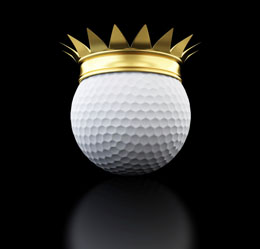A Short History of Salmon Flies
The first patterns many today consider as Classic Salmon Flies were introduced in the late 1700's. The flies were called the Peacock Fly and the Dragon Fly. In the nineteenth century what we today call works of art were made strictly for utilitarian purposes; they were tied to be fished. They were not tied to be mounted in a glass dome showcase or framed and hung on the office wall.
When the sport of Salmon Fishing became popular, England was a powerful colonial nation upon which the sun never set. Because of this, tiers of the Salmon Fly were able to obtain rare or exotic feathers with which to tie ever more colorful patterns to attract and catch the Atlantic salmon from the rivers of England, Ireland and Scotland. Feathers from birds such as the common Peacock from India, the gigantic Ostriches found in Africa, and the more exotic Jungle Cock of Africa, were becoming easier to obtain and tie with. Macaw, Tucan, and Cock-of-the-Rockfeathers from South America were becoming very popular on many patterns.
Today many of the feathers commonly used by tiers of yesterday are vary hard to find, and in some cases are even unobtainable. An example is the Great Bustard. The Great Bustard became extinct in Britain in 1832, and today the Great Bustard is a globally threatened species. Stricter import-export laws around the world are in place to protect other threatened species as well, making some materials illegal to own or even possess. Because of this, today we tie Classic Salmon Flies with a variety of substitute materials. Dyed and reshaped Ring Neck Pheasant neck feathers are used on many flies in place of Indian Crow (which, by the way, can cost you your first born to obtain if you are lucky enough to find them). Goose Shoulder feathers have taken the place of Swan feathers for Married Wings. In truth, the only difference between Swan and Goose feathers is that the barbs of the Swan feather are usually longer than those on the Goose feather, other than that it's hard to tell a Goose feather from a Swan feather. Today, materials such as rayon are used in place of the finer silks used in the past from Japan. Silver and gold tinsel are made of Mylar and hooks are made on an assembly line, not by hand one at a time as in the past.
However, there are some tiers today that have stayed true to the traditions of the past. They use only the finest materials available (and in some cases, the rarest materials available) whenever possible, and they tie them on hooks still made by hand, one at a time. In a few cases, they tie them without the help of a vice used to hold the hook, which allows the tier to have both hands free while tying. Thanks to tiers such as Wolfgang von Melottke, Fabrizio Garadino and Kim Rassmussen, the art of the Salmon Fly will continue to flourish.
Many people have seen a Classic Salmon Fly tied by one of the master tiers of today and wished they had the artistic talent required to tie a Classic Salmon Fly, and there's good news for those people; artistic talent has little to do with tying a Classic Salmon Fly. All the aspects of tying a Classic Salmon Fly can be learned and no artistic talent is required, although it can't hurt. The advent of the Internet has made it possible for millions to view, fall in love with, and learn this unique style of fly tying. Modern technology has made a once exclusive hobby available to anyone who is interested, and gives them access to a very old, still thriving tradition that is sure to bring them many years of rewarding fly tying. So, do your homework and get started on one of the most fascinating hobbies you could ever be involved with; but I must warn you, tying the
Classic Salmon Fly can become an obsession. The more you tie the more interesting you will find the historic journey of the Classic Salmon Fly to be. What other hobby can connect the past with the future by tying materials on a hook in such an artistic way?
Fishing Through the Ages
Give the Gift of a Fishing Trip


